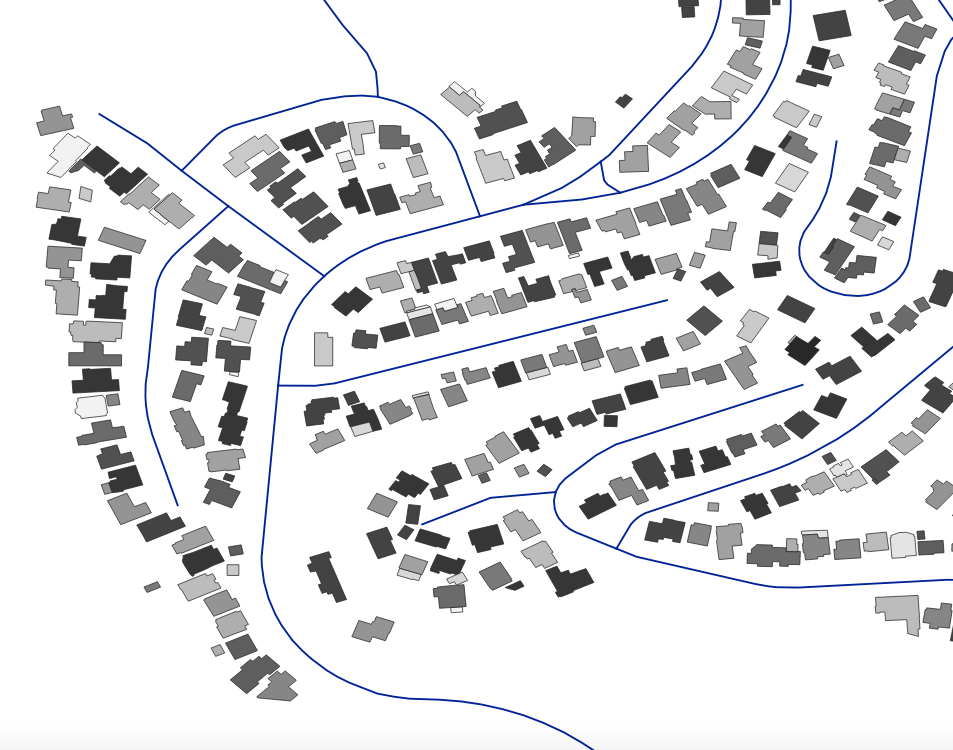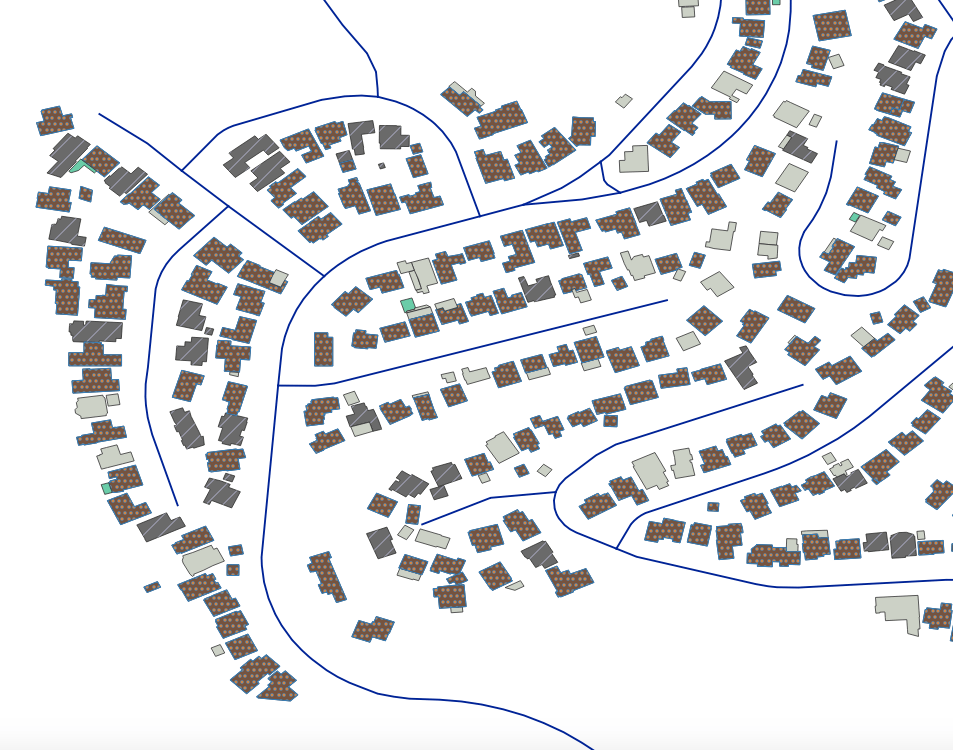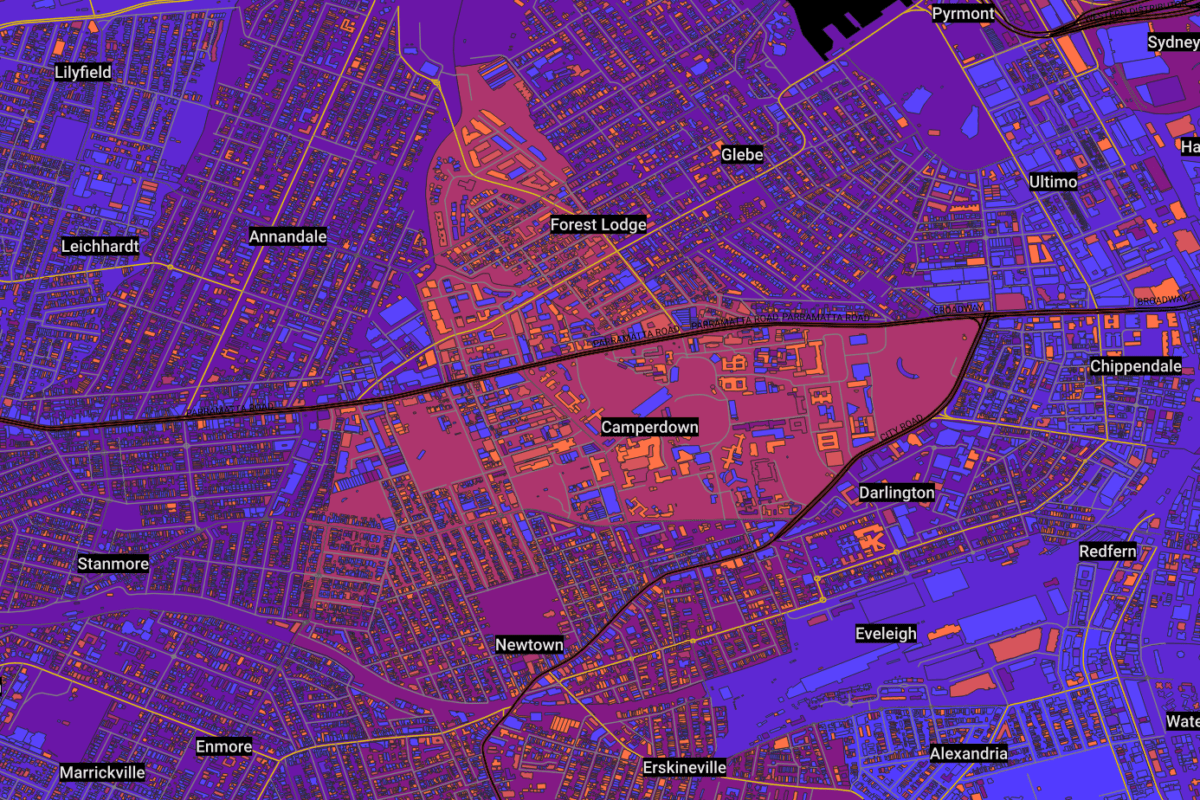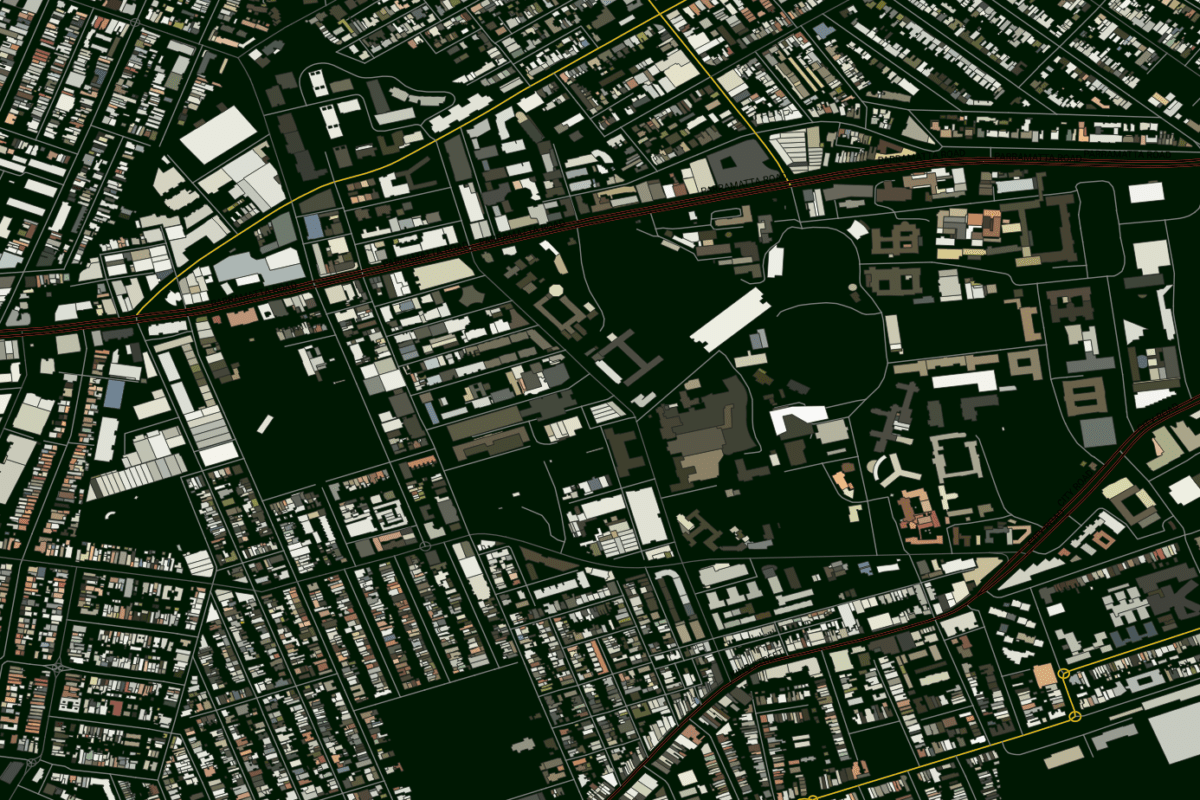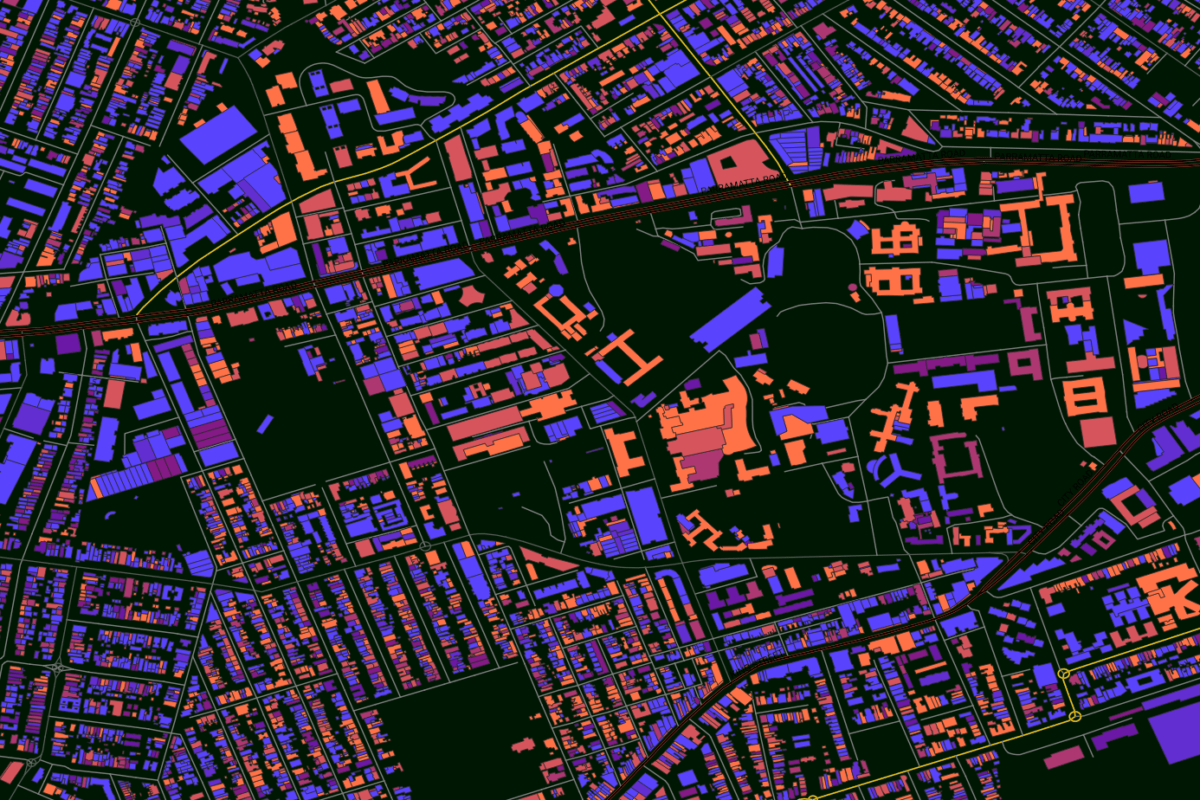We’ve already seen that Geoscape Buildings can be used to estimate and aggregate the Solar Reflectance Index and assist in managing the impacts of roof selection in the Urban Heat Island.
This is a more technical deep dive into how we calculated the Solar Reflectance Index values for our previous article.
What is the Urban Heat Island Effect?
An urban heat island is an urban area or metropolitan area that is significantly warmer than its surrounding rural areas due to human activities. The temperature difference is usually larger at night than during the day, and is most apparent when winds are weak. UHI is most noticeable during the summer and winter. The effect increases energy costs (air conditioning), air pollution levels, and heat-related illness and mortality.
Buildings and their roof construction are significant contributing factor to the UHI effect. Geoscape Buildings includes attribution for roof_colour and primary_roof_material. These can be used to calculate the effect that buildings and whole suburbs have on the UHI.
How is it calculated?
One way to measure how ‘cool’ a roof can be is by calculating its Solar Reflectance Index (SRI)[1] which is the roof’s ability to reject solar heat[2]. SRI incorporates estimates for both:
- Solar Reflectance – the ratio between solar energy globally reflected by a surface and the total incident solar energy, and
- Thermal Emissivity – the property of a roof to radiate energy with respect to a black body at the same temperature, per unit area.[3]
SRI is defined such that a standard black (reflectance 0.05, emittance 0.90) has a value of 0 and a standard white (reflectance 0.80, emittance 0.90) has a value of 100. The higher the SRI value, the ‘cooler’ the roof is.
Solar Reflectance
Solar reflectance can be estimated using the roof colour supplied with the Geoscape Buildings 3.0 product. The value for roof colour is given in a CMYK hex value (ie #B5B7AB). This is a string representing the colour parts of Cyan 1%, Magenta 0%, Yellow 7%, Black 28%.
Using the roof colour we can calculate a representative Albedo value between 0 (black – full absorptance) and 1 (white, full reflectance) to use as a Solar Reflectance value.


